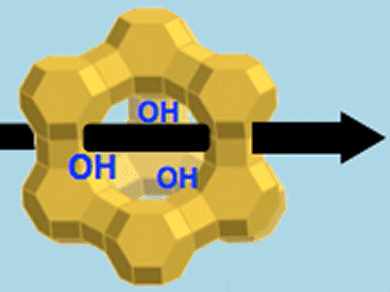In the twenty-first century, highly efficient oil conversion and petrochemical processes will be a central issue, as will the control and distribution of other energy sources. To reach high conversion performances, zeolites are key materials because their properties can be tuned either by selecting their pore size and internal shape or by modifying their Brønsted and Lewis acidity, which is essential for their chemical reactivity.
The number of Brønsted acid sites of a catalyst can be measured with good accuracy by various techniques, and the heterogeneity of their environment and strength have been demonstrated by experiment and theory. The carbocation intermediates are generally present at very low concentration and thus are difficult to directly detect and observe.
Isotopic H/D exchange has been monitored by in situ MAS NMR spectroscopy of 2-[D14]methylpentane with H-USY zeolite to probe the controversial alkane conversion mechanism. Francis Taulelle, Mohamed Haouas, Gerhard Fink, Institut Lavoisier de Versailles, France, and Jean Sommer, Université de Strasbourg, find that the first and subsequent steps of the H/D exchange proceed at room temperature through a carbenium intermediate species. The study proves that even at room temperature, carbenium ions are bona fide reaction intermediates on this catalyst.
- Low-Temperature Alkane C–H Bond Activation by Zeolites: An In Situ Solid-State NMR H/D Exchange Study for a Carbenium Concerto
M. Haouas, G. Fink, F. Taulelle, J. Sommer,
Chem. Eur. J. 2010, 16 (30).
DOI: 10.1002/chem.201000913


